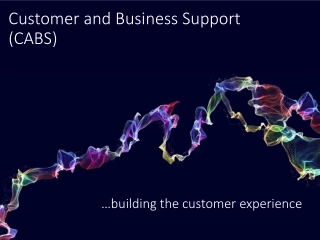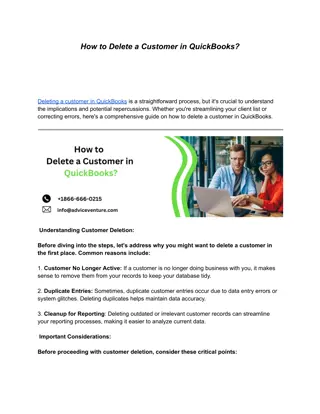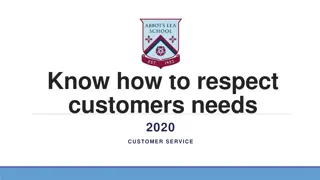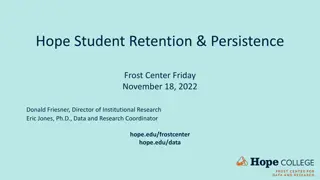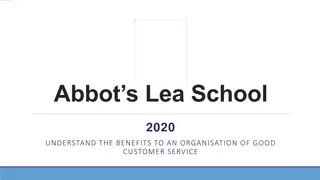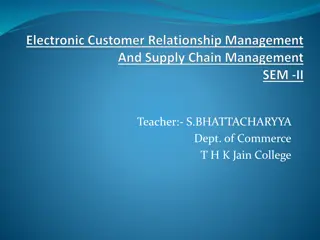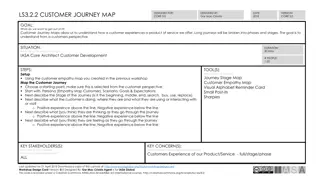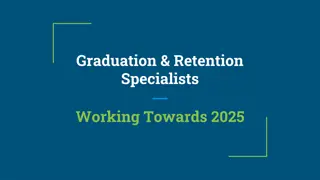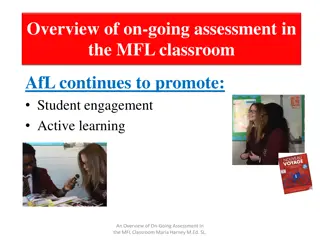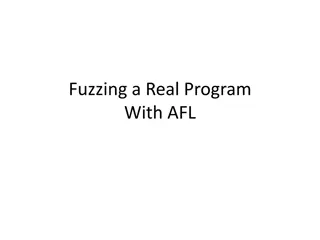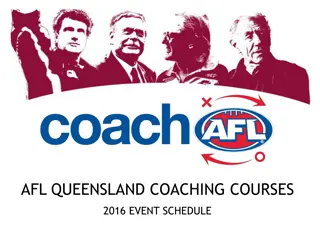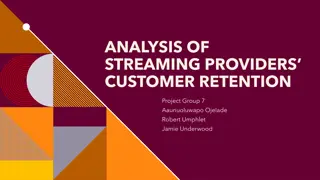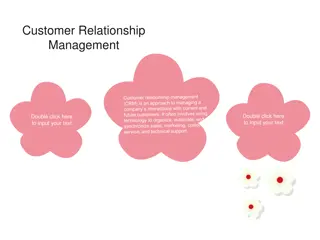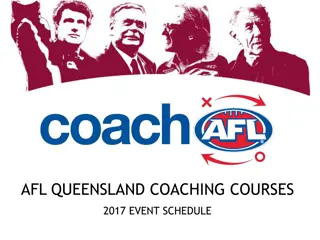
Improving Customer Retention through Cancellations Best Practices
Discover best practices for minimizing cancellations in the insurance industry, focusing on processes for handling direct debit cancellations and maximizing recovery. Gain insights from insurer contributions and explore key findings on letter writing and communication strategies.
Download Presentation

Please find below an Image/Link to download the presentation.
The content on the website is provided AS IS for your information and personal use only. It may not be sold, licensed, or shared on other websites without obtaining consent from the author. If you encounter any issues during the download, it is possible that the publisher has removed the file from their server.
You are allowed to download the files provided on this website for personal or commercial use, subject to the condition that they are used lawfully. All files are the property of their respective owners.
The content on the website is provided AS IS for your information and personal use only. It may not be sold, licensed, or shared on other websites without obtaining consent from the author.
E N D
Presentation Transcript
Cancellations Best Practice Working together to improve customer retention 2nd Edition 23Oct19 Contributions from
Purpose - (this is a shared problem for both Insurers and Distributors) In short, Cancellations (especially year 1) are rising slowly but surely year on year, despite better products and a rise in policy benefits Consumer behaviour is changing Expectations of flexibility and service are higher Distrust remains uncomfortably high Documentation is now delivered electronically making insurance seem less and less tangible in the eyes of the consumer. Therefore, we need to look at the PROCESS of how INSURERS handle cancellations, especially direct debit cancellations, missed payments and reinstatement. Then how BROKERS work in tandem with insurers to MINIMISE cancellations and maximise RECOVERY/RESINTATEMENTS assuredfutures.co.uk
How we have arrived at this guidance We have mapped the cancellation processes of many insurers across different insurance markets; Life Insurance Over 50 s Income Protection Private Medical Insurance Accident & Sickness Cover All are discretionary purchase insurance and all paid monthly by direct debit. assuredfutures.co.uk
Insurers who have contributed assuredfutures.co.uk
How we have arrived at this guidance (a significant piece of work) assuredfutures.co.uk
Our Findings We have discovered a wide variety of approaches where use of letters, text, calls and emails were all used in a plethora of ways - we can now spot best practice. We cross-referenced the insurer processes against our retention rates (first 2 years) to establish consistency between performance and process. By looking across the different market sectors, LIFE, HEALTH and GI INCOME PROTECTION we have gained a unique perspective on this matter and can share helpful guidance and best practice, for all firms to benefit. Included: Suggested Process Suggested Letters and Texts Key findings assuredfutures.co.uk
Key Finding 1 - Letters The quality of the letter writing has been low, with poor explanations of options, empathy and understanding. There are few clear calls to action Intermediary/advice given is rarely acknowledged or suggested Shepherds Friendly s more human touch and style is commended LVs & AIGs inclusion of the brokers contact details is commended Holloway sends a helpful leaflet challenging the clients reasoning for cover Exit presentation mode to download copy Guidance Review and rewrite letters in plain English and consumer friendly Clear call to action Call us on 0800 ******* Remove any paper direct debit mandates (even if optional it confuses the requirement) State options change you payment date, change you bank account, pay arrears by credit card Include intermediaries Name and Phone number Include content to remind clients why their cover is so important and how would the cope without it. assuredfutures.co.uk
Key Finding 2 Letter Frequency The stronger the contact strategy in the first 4 weeks, the better the results. Bupa writes every 7 days, for 4 weeks and then for 2 subsequent months to allow reinstatement and have some of the best results Guidance Send 1 letter every 7 days for first 4 weeks Follow up c60 days and c90 days assuredfutures.co.uk
Key Finding 3 Use Texts as a reminder Very few companies utilise Texts Distributors like L&C Mortgages + Vast Visibility (GI aggregator) use this to good effect with good response rates Whilst not appropriate to deliver a complex message, text is very good as a reminder and driving phone calls to a telephone number linked within the Body of the text. Aviva General Insurance use this to great effect Guidance Send a text with embedded phone number 2/3 days after each letter Example: Hi, Your important Medical Insurance is at risk of being cancelled due to problems with your payment. Please call 0203 456 7890 urgently. [Insurer name, up to 21 characters] Total 159 Characters assuredfutures.co.uk
Key Finding 4 Early Notice to Intermediaries A consistent feature of good performance is that the earlier the insurer informs the intermediary, the better the retention. This of course, doubles the resource and effort with both insurer and broker attempting to recover potential losses of client. (Legal & Generals early warning system allows the broker to make personal contact with the client and check the reasons for failed payments/cancellations, often resulting in saved clients). Daily these must be sent immediately either by 1) Email separate for each policy, or 2) daily report (containing multiple policies) . Weekly reports are not quick enough. Adding to perpetual list of all cases in arrears (i.e showing the same cases week after week is no good. Just confuses and repeats. We acknowledge that not all intermediaries will Guidance Send an email on every event for each client to the intermediary same day Alternative send a daily arrears report (only with new events) assuredfutures.co.uk
Key Finding 5 Reinstatement Many insurers insist on taking new instructions from only the policy holder, this results in brokers making contact but then putting clients through a terrible customer journey and forcing them to repeat the conversation with the insurer We must make this easy for clients and not pass them from pillar to post. Cancelling quickly due to non-payment (some on day 7 or 24!) does not cater for busy lives, buyers remorse and consumer behaviours. Allowing reinstatement up to 90 days in arrears aids retention as well. Some insurers still require a signed mandate, compare this to AIG and Trent Services who accept brokers verbal instructions thus making it easy for clients, regardless of who they speak with Missed payments/Arrears must be handled creatively to discourage re- broking/replacements. Some insurer spread arrears over 12 months, some write off one months arrears to help customers in need. Guidance Allow verbal instructions from intermediaries to restart/amend direct debit collections Allowing reinstatement up to 90 days (before DOH required for Life/IP) Allow arrears to be collected by credit card or spread over next 12 months assuredfutures.co.uk
Key Finding 6 Emails & portals often dont work! Insurance is an intangible product delivering documents and important messages electronically make this product even more intangible. We need to balance the cost & environmental benefits of digital communication with the more human aspects of behaviour which are sometimes contradictory. How much are we damaging the consumers attachment and value of our product by not providing tangible documents? Does this impact buyers remorse? Emails are easily missed and unopened. (Spam, volume, etc) if email is preferred insurers must demonstrate the data that shows clients open rate is high otherwise we risk cancelling cover without the client knowing conduct & TCF risk. Email preference is erratic some people like, some are swamped and fatigued by email and apps , generation Z will consider email old hat and some baby boomers still struggle Letters carry more authority - but texts act as the best reminder and call to action. Guidance Do not rely purely on digital communications Send policy Documents by paper copies by email/portal Send import notices (your cover will cease through non payment) by paper copies by email - portal assuredfutures.co.uk
Key Finding 7 Basic banking We have found a strange variety of out dated practices amongst the market. As a policy gets older consumers forget, and become untrusting. They often cancel DDMs that they become unfamiliar with, especially for less familiar brands, so it is important to be clear what this direct debit payment is for. Aegon branded policies carry Scottish Equitable on the bank statement, similar for OneFamily using a former incarnation of Engage Mutual Few insurers state the product if a client forgets who they are insured with they will often cancel the direct debit first and worry about the impact later. Are we expecting too much of consumers to remember that Cirencester Friendly means Income Protection Insurance? Some insurers have fixed payment dates with no flexibility Guidance Variable collection dates 1st to 28th Modifiable by the client at any point (broker also can give instructions collected from client) What appears on Bank statement: In order of Importance: 1) Product Name 2) Insurer name 3) Policy number (for ease of indentification) Ideal Example: Aviva Life Insurance 012345678 assuredfutures.co.uk
Key Finding 8 How to involve brokers/distributors We acknowledge not all brokers will have the resources or desire to act Some insurers do telephone the client (but without much success) Some distributors/brokers do call the client (often at the similar stages to insurers) Rule of Thumb: INSURER: Send letters and texts these have the best response rates BROKER/DISTRIBUTORS: Call clients to back up Each party is free to do additional activity assuredfutures.co.uk
Best practice 1st 2 weeks DDM Payment Failure (insufficient funds) DDM Cancelled Direct Cancellation (when the customer specifically requests cancellation) Day Letter 1A sent Letter 1B sent Email to broker Letter 1C Email to broker Day 1 Text to client Day 4 Reattempt DDM payment Letter 2B sent Day 7 Exit presentation mode to access embedded word documents Letter 2A sent Day 9 Email inform broker Text to client Day 10 Text to client Day 12 Letter 3B sent Day 14 assuredfutures.co.uk
Best practice 2nd 2 weeks DDM Payment Failure (insufficient funds) DDM Cancelled Direct Cancellation Day Letter 3A sent Day 16 Text to client Day 18 Text to client Day 20 Letter 4B sent Day 21 Letter 4A sent Day 23 Text to client Day 24 Text to client Day 26 assuredfutures.co.uk
Best practice 2 to 3 months DDM Payment Failure (insufficient funds) DDM Cancelled Direct Cancellation Day Letter 5B sent Day 28 Letter 5A sent Letter 2C sent (comeback letter) Day 30 Text to client Day 31 Text to client Day 33 Letter 6A sent Letter 6B sent Day 58 Text to client Text to client Day 60 Letter 7A sent (text to client) Letter 7B sent (text to client) Day 88 assuredfutures.co.uk

